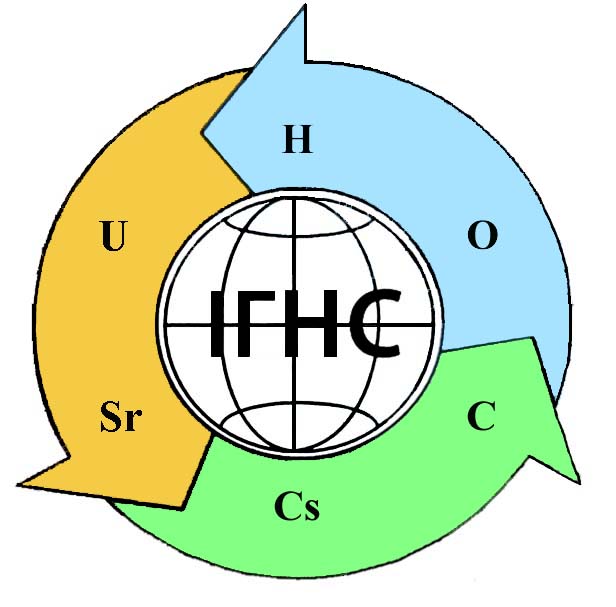BIOKINETIC PARAMETERS OF TRITHIUM FRACTIONATION BY FRESH WILLOW CUTTINGS
DOI:
https://doi.org/10.32782/geotech2022.35.13Keywords:
tritium water, freshly cut willow cuttings without roots and leaves, absorption through the periderm, transpiration through the periderm, plant sap, biokinetic parametersAbstract
A model experiment was carried out to study the peculiarities of redistribution of the aqueous form of tritium in a closed ecosystem using freshly cut cuttings of white willow (Salix alba L.). There were neither leaves nor roots in the cuttings. The cuttings were grown in tritium water – a feeding solution (FS), in a transparent closed chamber from organic glass. The kinetics of tritium uptake in the "FS-living matter" system was studied. It was found that the specific activity of the tritium water of FS was significantly decreased under the impact of plants, as in the case of developed cuttings with leaves. Processes of fractionation of hydrogen isotopes in the cultivation of white willow in the environment of tritiated water occur independently of the presence of leaves and root systems in the cuttings. This is the evidence of the defining role of biophysical processes (probably diffusion-osmotic) and transpiration, and the secondary role of photosynthesis in the fractionation of tritium by leafless cuttings. Fresh willow cuttings without roots and leaves are able to effectively absorb tritium from the medium and evaporate tritium water to the air, acting as a "tritium" pump. The 3H concentration in the transpiration gases also decreases significantly following reduction of specific activity in FS. Despite the lack of leaves, the freshly cut cuttings are able to evaporate (transpire) a significant amount of water to the air. The green periderm of the cuttings participates in oppositely directed processes. The lower part, immersed in water, together with the lower cut performs a suction function similar to that of the roots, while the upper part, which is above the water, together with the upper cut provides transpiration. It is obvious that the cuttings’ periderm as well as the upper and lower cuts perform both functions much less efficiently than the specialized developed organs of the plant. Biokinetic parameters of tritium fractionation in the feeding solution during the willow cultivation coincide in value with those experimentally calculated by us earlier when growing rooted willow cuttings with leaves. At the same time, the kinetics of tritium accumulation in transpired gases and plant’s sap differs from that for developed cuttings with roots and leaves.
References
Polevoy, V.V. (1989), Fiziologiya rasteniy. Moscow: Vysshaya shkola.
Kramer, P.D., Kozlovskiy, T.T. (2013), Fiziologiya drevesnykh rasteniy. Moscow: Kniga po Trebovaniyu.
Bobkov, V., Dolin, V. (2016), Isotopic Exchange of Tritium in the Process of Willow Vegetation, Collection papers Institute of Environmental Geochemistry, 25: 49-55. URL: http://dspace.nbuv.gov.ua/handle/123456789/140454 (Last accessed: 13.02.2021).
Dolin, V.V., Bobkov, V.M., Pushkarev O.V., Koshliakova T.O. (2018), Isotopic Effects of Tritium during the Growth of White Willow. Universal Journal of Geoscience, 6(6): 175-183.
Dolin, V.V., Bobkov, V.M. (2020), Pecularities of the tritiated water transpiration flux during willow vegetation, Geochemistry of technogenesis, 4: 50-57.
Dolin, V.V., Bobkov, V.M. (2020), Dose-dependent effects of isotopic exchange of tritium in the process of willow vegetation. Nucl. Phys. аnd Atom. Energy. 21( 4): 354-360.









